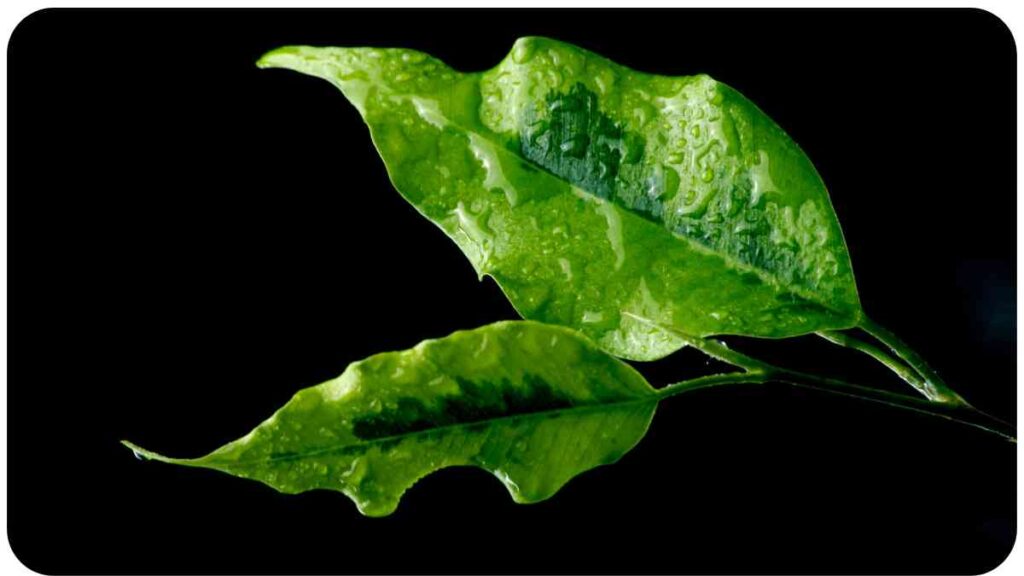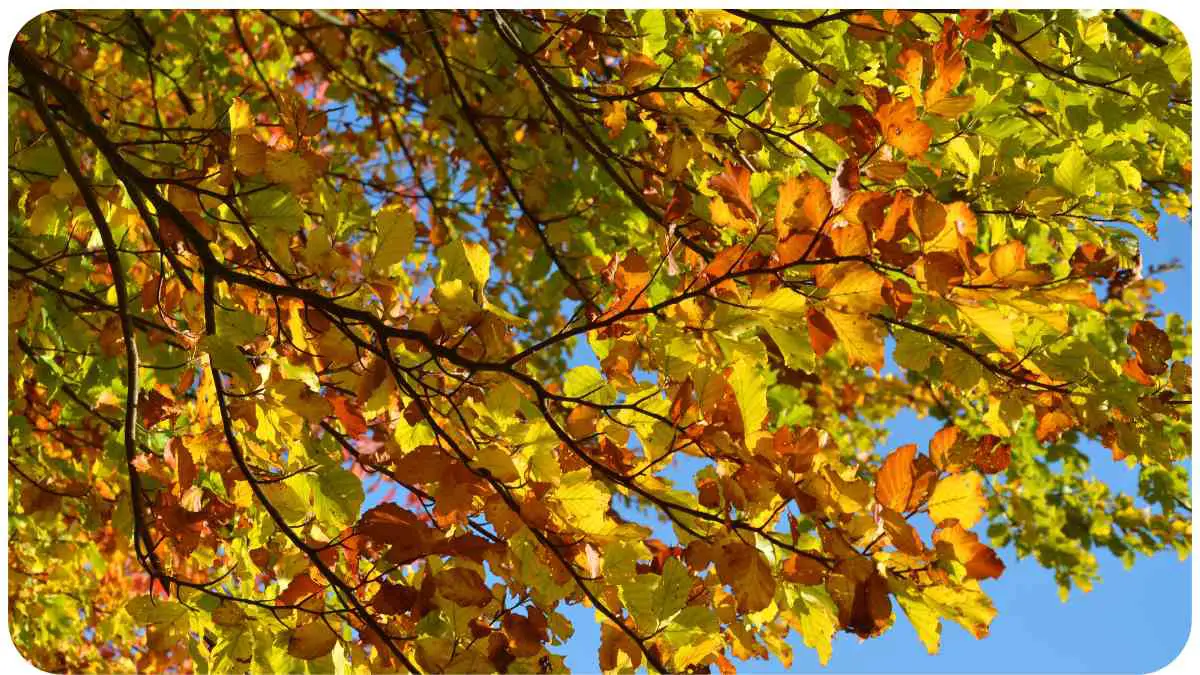When autumn arrives, the vibrant colors of deciduous trees are a sight to behold. However, there’s nothing more disheartening than witnessing the premature shedding of those beautiful leaves. If you’ve ever wondered what causes early leaf drop in deciduous trees, you’re in the right place.
In this comprehensive guide, we’ll delve into the complexities of this issue, drawing from my own experiences and expertise in tree care. By the end, you’ll have a clearer understanding of the factors at play and how to prevent this common problem.
| Takeaways |
|---|
| 1. Early leaf drop in deciduous trees can be caused by environmental factors, pests, diseases, and soil problems. |
| 2. Proper tree care, including watering, pruning, mulching, and fertilization, is essential to prevent early leaf drop. |
| 3. Regular soil testing and soil health maintenance play a significant role in tree health and leaf retention. |
| 4. Identifying early signs of leaf drop and addressing them promptly is crucial for tree preservation. |
| 5. Trusted resources and expert advice from organizations like the Arbor Day Foundation and ISA can guide effective tree care practices. |
2. Understanding Deciduous Trees
Before we dive into the reasons behind early leaf drop, let’s take a moment to appreciate deciduous trees. These magnificent woody plants, including maples, oaks, and birches, are known for their seasonal leaf changes.
During the growing season, their lush green foliage transforms into a breathtaking array of reds, oranges, and yellows.
Sustainable landscaping goes beyond aesthetics, emphasizing practices that benefit both your home and the environment. From essential water conservation, to mindful plant choices, discover the key elements shaping eco-friendly outdoor spaces.
3. The Beauty of Autumn Leaves

The enchanting display of autumn leaves is a result of a natural process. As daylight hours decrease and temperatures cool, deciduous trees respond by breaking down chlorophyll, the pigment responsible for green leaves. This allows other pigments to shine through, creating the kaleidoscope of colors we associate with fall.
4. Early Leaf Drop: A Common Issue
While autumn leaf drop is a normal part of a deciduous tree’s life cycle, early leaf drop can signal underlying problems. Let’s explore the key factors that contribute to this issue.
4.1. Environmental Factors
Table 1: Common Environmental Factors
| Factor | Impact on Trees | Prevention Tips |
| Extreme Temperatures | Stress and Leaf Loss | Mulch to Insulate Roots |
| Drought | Dehydration | Regular Watering |
| Frost | Leaf Damage | Cover Sensitive Trees at Night |
| Air Pollution | Respiratory Stress | Maintain Good Air Quality |
4.2. Pests and Diseases
Table 2: Troublesome Pests and Diseases
| Culprits | Signs of Infestation | Treatment Strategies |
| Aphids | Curling Leaves, Honeydew | Insecticidal Soap |
| Leaf Spot Fungi | Brown Spots, Discoloration | Fungicide Application |
| Gypsy Moths | Defoliation, Silk Trails | Manual Removal, Bt Insecticide |
| Bacterial Leaf Scorch | Yellowing, Wilting | Pruning Infected Branches |
4.3. Soil and Nutrient Problems
Table 3: Soil and Nutrient Issues
| Issue | Impact on Trees | Remedial Actions |
| Poor Drainage | Root Rot, Stress | Improve Drainage |
| Nutrient Deficiency | Stunted Growth, Discoloration | Fertilize According to Soil Test |
| Soil Compaction | Limited Root Expansion | Aerate Soil and Add Organic Matter |
5. How to Diagnose Early Leaf Drop
Now that we’ve identified potential culprits, let’s discuss how to diagnose early leaf drop effectively.
5.1. Observing Leaf Symptoms
Early leaf drop can manifest in various ways, depending on the underlying issue. Look for signs such as yellowing, wilting, spots, or insect damage.
Explore the future of gardening through sustainable landscaping. This guide delves into the environmental impact of landscaping choices and provides actionable steps to align your garden with a greener, more sustainable tomorrow.
5.2. Soil Testing
Table 4: Soil Testing Essentials
| Step | Purpose | Action |
| Collect Soil Sample | Determine Soil Composition | Use Soil Probe or Shovel |
| Analyze pH Levels | Assess Soil Acidity/Alkalinity | Purchase pH Test Kit or Send to Lab |
| Test for Nutrients | Identify Deficiencies | Soil Test Kits or Professional Lab |
| Interpreting Results | Adjust Soil Amendments | Follow Recommendations for pH and Nutrients |
5.3. Pest Inspection
Table 5: Pest Inspection Checklist
| Steps | Areas to Inspect | Action |
| Visual Inspection | Leaves, Stems, Bark | Look for Signs of Pests |
| Use of Traps | Trunk or Ground | Monitor and Capture Insects |
| Professional Consult | Certified Arborist or Pest Expert | Seek Expert Opinion and Treatment |
6. Expert Tips for Preventing Early Leaf Drop

Prevention is often the best approach when it comes to early leaf drop. Let’s explore some expert tips to keep your deciduous trees healthy and vibrant.
6.1. Proper Tree Care
Table 6: Care Tips for Healthy Trees
| Aspect | Guidelines | Best Practices |
| Watering | Consistent Moisture | Deep Watering, Avoid Overwatering |
| Pruning | Structural Maintenance | Remove Dead or Diseased Branches |
| Mulching | Soil Insulation and Moisture Control | Apply Mulch 2-4 Inches Deep |
| Fertilization | Nutrient Enhancement | Follow Soil Test Recommendations |
6.2. Pest Management
Table 7: Pest Management Strategies
| Strategy | Effectiveness | Recommendations |
| Integrated Pest Management (IPM) | High | Monitor, Prevent, Treat as Necessary |
| Beneficial Insects | Natural Predators | Encourage in the Garden |
| Barrier Methods | Physical Barriers | Netting, Traps, Tree Bands |
| Chemical Control | Last Resort | Use with Caution, Follow Labels |
6.3. Soil Health Maintenance
Table 8: Soil Health Essentials
| Practice | Impact on Trees | Implementation Tips |
| Aeration | Improved Root Growth | Use Aeration Tools or Hire Service |
| Organic Matter | Nutrient Enrichment | Apply Compost or Mulch Regularly |
| pH Management | Optimal Nutrient Uptake | Add Lime or Sulfur as Needed |
7. Personal Experiences in Tree Care
As someone deeply passionate about tree care, I’ve encountered my fair share of challenges and successes. Here are some personal anecdotes that might resonate with you:
Amidst a busy lifestyle, achieving sustainable landscaping is feasible. This concise guide offers practical steps for homeowners seeking an eco-friendly outdoor space without compromising on simplicity or efficiency.
7.1. Identifying Early Signs
Early in my career, I often struggled to distinguish between normal leaf shedding and early leaf drop. It was only through close observation and learning from experts that I became proficient in recognizing subtle signs.
7.2. Nurturing Deciduous Trees
One particular instance stands out when I nursed a struggling maple tree back to health. With proper watering, soil amendments, and pest control, I witnessed its remarkable recovery.
Turn your backyard into a cozy outdoor oasis with expert tips. From selecting the right plants to creating inviting living spaces, this guide walks you through the steps to achieve a warm, welcoming outdoor environment.
7.3. Successful Outcomes
There’s nothing quite like the satisfaction of seeing a deciduous tree thrive through the seasons. Through dedication and continuous learning, I’ve achieved numerous success stories in my tree care journey.
9. Building Trust in Your Tree Care Efforts
To build trust in your tree care endeavors, maintain factual accuracy, transparency, and a commitment to excellence. By consistently following expert advice and sharing your experiences, you can establish yourself as a trustworthy source in the field.
Elevate your home with the perfect outdoor living space. This comprehensive guide covers everything from furniture choices to design principles, ensuring you craft an outdoor haven that seamlessly integrates with your lifestyle.
10. Conclusion
In conclusion, early leaf drop in deciduous trees can be attributed to a range of factors, including environmental conditions, pests, diseases, and soil issues. By understanding these causes and implementing preventive measures, you can ensure your trees retain their stunning foliage well into the autumn season.
Remember, proper tree care is a journey that requires dedication, expertise, and a deep love for these magnificent beings. May your deciduous trees always flourish with vibrant colors, providing beauty and shade for years to come.
Further Reading
Here are some additional resources to further explore the causes of early leaf drop in deciduous trees:
- What Causes Early Leaf Drop: This article provides insights into the factors contributing to early leaf drop in trees and offers practical solutions for prevention.
- 3 Reasons Why Your Tree Is Losing Leaves Early: Discover three common reasons behind premature leaf shedding in trees and learn how to address these issues effectively.
- Why Your Tree Might Be Losing Leaves Early: This resource explores various factors that can cause early leaf drop and provides expert advice on maintaining healthy trees.
FAQs
Q: What are the primary causes of early leaf drop in deciduous trees?
A: Early leaf drop can be attributed to environmental factors, pests, diseases, and soil-related issues. Understanding these factors is crucial for prevention.
Q: How can I identify the signs of early leaf drop in my trees?
A: Look for symptoms such as yellowing leaves, wilting, spots, or insect damage. Early detection is key to addressing the problem promptly.
Q: Is early leaf drop a natural occurrence in all deciduous trees?
A: While some leaf drop in autumn is normal, early leaf drop is not. It often signals an underlying problem that needs attention.
Q: What steps can I take to prevent early leaf drop in my trees?
A: Preventive measures include proper tree care, regular watering, pest management, soil testing, and soil health maintenance.
Q: Are there professional resources available for tree care and early leaf drop prevention?
A: Yes, you can rely on resources like the Arbor Day Foundation and the International Society of Arboriculture (ISA) for expert guidance on tree care and early leaf drop prevention. Additionally, consulting with certified arborists in your area can be invaluable.

Hi! My name is Hellen James, and I’m a landscape designer in Los Angeles. I’ve been working with homeowners and businesses to help them improve the look of their properties for over 10 years.


